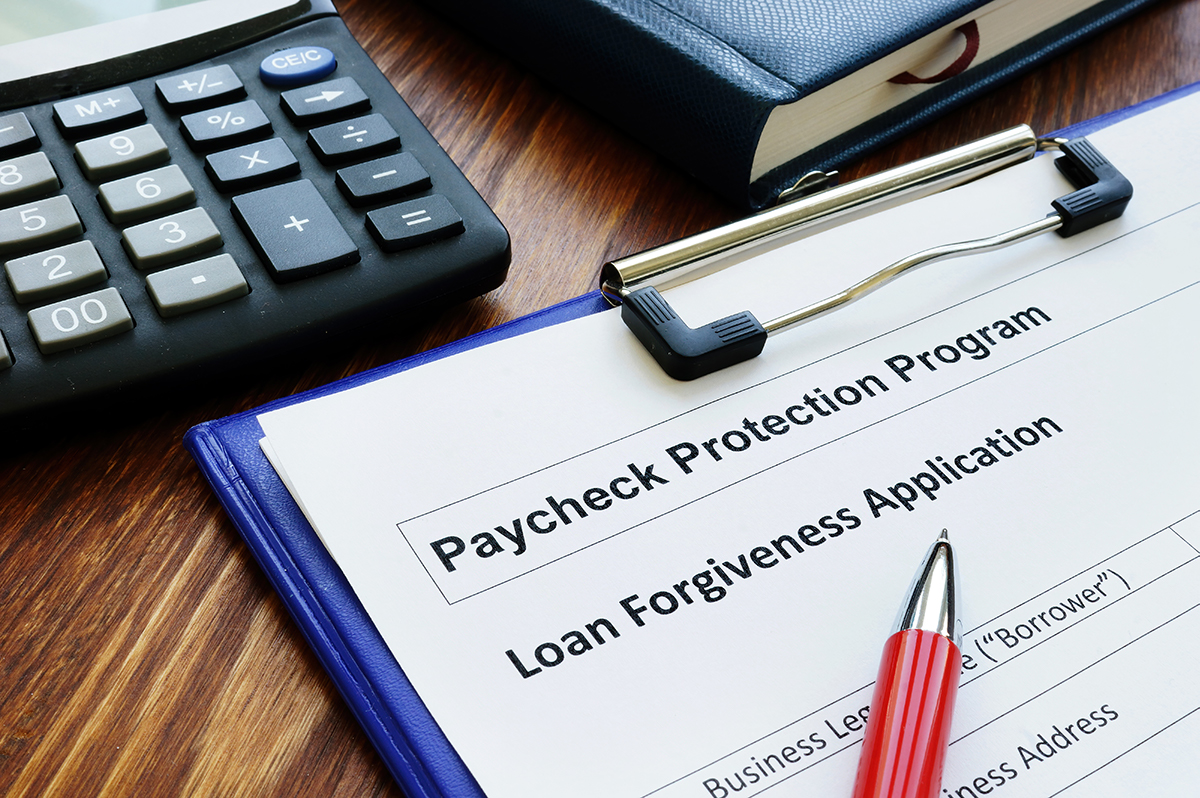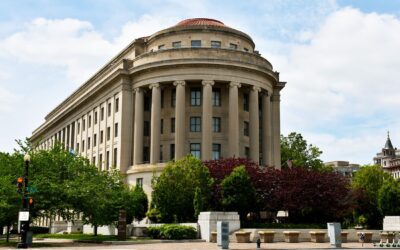Everyone from your hairdresser, your church pals, and your brother-in-law, to your car salesperson seems to be an expert on PPP loans. PPP discussions are unavoidable these days; even my eight year old heard about it from TikTok. She thought she was back to our puppy training days of Paw, Praise and Pat. Some say you can get thousands to millions in tax-free grants if your accountants do their jobs correctly. The reality of the PPP loan is that if you can establish that you meet the criteria set forth in the Small Business Administration (SBA) guidelines, your loan may convert to a grant, thus not requiring repayment. The amount of the loan is based on payroll costs or some equivalent as defined in the guidelines for self-employed businesses. To be eligible to convert to a grant, the money borrowed through the PPP must be used primarily to cover payroll costs along with other expenses such as rent expense, utility payments and other qualified costs as provided by the Congress and administered by the SBA. To be realistic, please do not expect to get a grant of $100,000 when payroll costs, or the self-employed income equivalent, for 2019 was only $10,000.
If you received a PPP loan during 2020 and spent all the loan proceeds according to the guidelines, applying for forgiveness is the next item on the agenda. Suppose you were so busy taking care of daily tasks that it was not until 4:18 PM on December 31, 2020 that you decided to hit the “submit” button on that PPP loan forgiveness application. You likely had fingers crossed and were hoping that the loan would be forgiven right away. Like most people, you were out of luck. It takes a good amount of time for your lender to process the application and then send it to SBA for approval. Your ultimate question is “If I have reason to believe that I am qualified for the loan forgiveness, should I recognize that loan as income for tax purposes in 2020 because all qualified expenditures were made during 2020, or should I wait until the loan will actually be forgiven in 2021?” The CARES Act, enacted on March 27, 2020, provided that loan forgiveness under a PPP loan be excluded from gross income. Even though at the federal level PPP loan forgiveness (the Forgiveness) is not taxable income, tax treatment on the state level varies. Luckily for New Jersey taxpayers, the State follows federal treatment of PPP loans; proceeds are excluded from gross income and related PPP expenses are fully tax deductible. So some might say, “Who in the world cares about timing when the Forgiveness is not taxable income?” It is never that easy. For some taxpayers, the timing of recognition of the Forgiveness is very crucial. To be 2020 or not to be 2020, that is the question.
You and your accountant need to decide the appropriate year to recognize PPP loan forgiveness. Be on notice, you may need to amend your 2020 tax return to comply with future IRS guidance. So far, as of the date this article is written, there is no guidance as to when to recognize the income. Although it seemed the IRS was leaning toward recognizing income in the year it is officially forgiven, that is still to be determined!
If your company is a pass-through entity such as a partnership or an S-Corporation, with basis issues, the timing of the recognition of the Forgiveness income is very important. As most people know:
- A partner’s “outside” tax basis is increased by:
- money contributed to the partnership,
- adjusted tax basis of non-cash property contributed less liabilities assumed by the partnership,
- partner’s share of income (including tax -exempt income),
- partner’s share of assumed liabilities owed by the partnership,
- partner’s share of any increase to the tax basis of partnership property under Sec.734(b),and
- other items as listed on the Instructions for Form 1065 (2020)
- A partner’s “outside” tax basis is decreased by:
- monies distributed to the partner,
- adjusted tax basis of property distributed to the partner, less liabilities assumed by the partner in related to the distributed property,
- partner’s share of net losses, deductions (including non-deductible expenses),
- the partner’s individual liabilities that are assumed by the partnership,
- the partner’s share of decreases to the tax basis of partnership property under Sec.724(b), and
- other items listed on the Instructions for Form 1065 (2020)
For any given year, should a partner’s “outside” tax capital balance go below zero, any excess distribution over the partner’s basis is taxed as a capital gain. For example:
During 2020, John Singleman had a beginning capital balance of $100,000, a share of $30,000 in partnership taxable net income, $80,000 share of PPP loan forgiveness non-taxable income and a cash distribution of $200,000 from the So Cool, LLC. John’s ending capital account at December 31, 2020 would have a balance of $10,000 ($100,000 + $30,000 + $80,000- $200,000). John would pay taxes on only his share of the partnership taxable net income of $30,000. Let’s say the So Cool, LLC did not recognize the PPP forgiveness as income in 2020 but rather in 2021. John’s capital balance at December 31, 2020 would have gone negative, to -$70,000 ($100,000 + $30,000 – $200,000). The $70,000 is considered an excess distribution, and John would have to pay capital gains tax on that amount on top of the $30,000 net income. Oops!
As for S-Corporations, the income is passed through to the shareholder(s) and each shareholder will pay taxes at the personal level to avoid double taxation. The shareholder has two types of basis in an S-Corporation: Stock Basis and Debt Basis. Stock basis is increased by ordinary income, tax-exempt income, excess depletion and other items listed in the 2020 Instructions for Form 1120-S and other IRS Publications and decreased by ordinary losses, nondeductible expenses, non-dividend distributions (cash distributions on previously passed-through income), depletion for oil and gas, and other items listed in the 2020 Instructions for Form 1120-S and other IRS Publications. A shareholder’s debt basis is increased by a debt that is owed by the corporation directly to the shareholder, net of repayments. The shareholder’s personal guarantee of the corporation’s debt to a third party will not increase the debt basis.
Recognizing the PPP loan forgiveness in 2020 or 2021 is very crucial for some S-Corporations. For example, Ms. Joy de LaOui owns Oui Oui Yogurt Inc. (an S-Corporation). Ms. LaOui is the only shareholder and owns 100% of the Company’s stock. For 2020, the Company received $300,000 as a PPP loan, had a net ordinary loss of $100,000 (included in this loss was $300,000 spent for PPP qualified expenses), a non-dividend distribution of $200,000, a beginning stock basis of $40,000 and a beginning debt basis of $30,000. If the Company recognized the $300,000 as non-taxable income in 2020, Ms. LaOui would be able to deduct the $100,000 ordinary loss on her personal tax return because her stock and debt basis as of December 31, 2020 still had a remaining balance of $70,000 [-$100,000 (ordinary loss) + $300,000 (tax-exempt PPP forgiveness) – $200,000(non-dividend distribution) + $40,000 and $30,000 stock and debt basis, respectively)].
On the other hand, if the Company recognizes the $300,000 PPP loan forgiveness as income in 2021, part of the $100,000 ordinary loss becomes non-deductible on Ms. LaOui’s personal tax return as follows: Stock basis of $40,000 + $30,000 debt basis to offset the first $70,000 of the $100,000 ordinary loss, the remaining $30,000 of ordinary loss is suspended and is not deductible in 2020 but rather carried forward to future years. In addition, the $200,000 non-dividend distribution was deemed taxable because it was in excess of stock and debt basis. Ms. LaOui will have to pay long-term capital gain on that $200,000 distribution.
At the time the Consolidated Appropriations Act of 2021 (CAA) was signed into law in late December of 2020, the Journal of Accountancy published an opinion article concerning S-Corporations with C-Corporation accumulated earnings and profits. The article suggested that PPP loan forgiveness income may increase an S-Corporation’s other adjustments account (OAA) rather than increasing the S-Corporation’s accumulated adjustment account (AAA). As a result, the non-dividend distributions to the S-Corporation shareholder that can be tax-free may be limited. In addition, the article also calls on sellers and buyers of partnership and S-Corporation interests to consult tax advisors when negotiating prices. The consideration of the timing of income recognition and the effect on basis may be a big part of that negotiation.
Determining the correct tax accounting treatment, the timing of when income and expenses are recognized, the consequences of distributions, and other tax related decisions can be challenging. It is hard, especially during the COVID-19 pandemic when there are so many other challenges. There are times one must stop, think, and, when in doubt, contact tax advisors. Simple miscalculations can create big tax implications. An ounce of prevention may save you money. The information and examples in this article are for informational purposes only. Although we tried our best to represent real-life tax consequences, they are not applicable to every company. Examining the unique aspects of your company with your tax advisors is highly recommended. If you have any questions, please feel free to contact our expert tax team at Capaldi Reynolds & Pelosi, PA. Our virtual office is always open to work with you.
Article Submitted by Quinn K. Do







